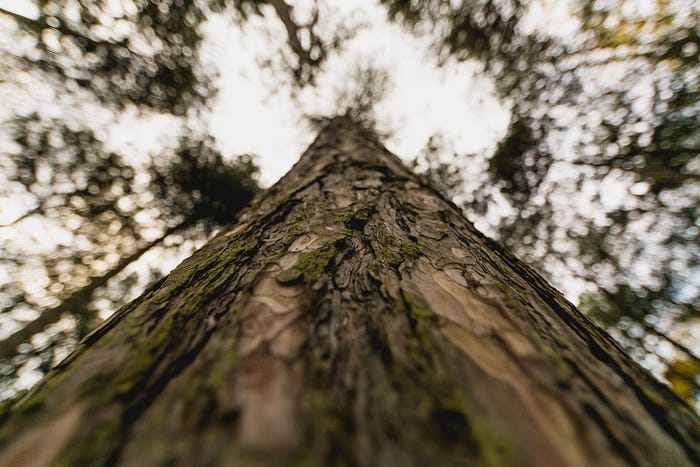
Mycoremediation: The Mushroom Solution to Pollution
Share
The current scenario worldwide showcases the alarming crisis posed by pollution: it is on the rise due to human activities causing rapid urbanization and industrial growth which ultimately leads to environmental contamination spreading across both soil and water bodies worldwide- with far-reaching impacts for both ecosystems’ health and species dependent on it alike.
However; hope springs eternal from unlikely sources- mushrooms! More specifically their inner root-like structure called mycelium provides a vital solution through “Mycoremediation,” derived from ‘mukēs’ i.e., fungi, and the Latin suffix ‘-remedium’ meaning ‘restoring balance.’

The Fungal Arsenal for Decontamination
Fungi are equipped with a powerful arsenal of metabolic pathways and enzymes that enable them to survive critical habitats and make them suitable for environmental cleanup. They can break down heavy metals, organic pollutants, pesticides, herbicides and pharmaceuticals in diverse environments such as landmasses, freshwater areas or marine regions. The byproducts of this process result in valuable materials themselves such as laccase or medicinal mushrooms.
Fungi possess a unique ability to produce specific enzymes that break down toxic products resistant to bacterial degradation.
These substances range from phenols to pigments found in wine distillery wastewater, X-ray contrast agents used mainly by medical imaging procedures or even ingredients found in daily use personal care products — all without hazardous byproducts. Where traditional remediation methods like high costs or feasibility concerns create prohibitive barriers e.g. cold or radioactive environments; mycoremediation that includes fungi offer a viable alternative.
Fungi and Pollutants
Thanks to their ability to produce specific enzymes for highly complex polymers, fungi can degrade many substances that are typically resistant to bacterial degradation.
Mycoremediation is a cost-effective method of remediation, not requiring expensive equipment and hence is often used in small scale applications like filtration of domestic wastewater and industrial effluents. A 2015 study even suggested that mycoremediation could help with soil biodegradation of polycyclic aromatic hydrocarbons (PAH).
Dealing with Metal Pollution
Industrial processes that utilize various metals have contributed significantly to rising levels of metal pollution around the world. The issue only exacerbates via wastewater discharges containing toxic elements that eventually make their way into our agriculture systems and thus our food supplies. Fortunately enough though; numerous studies have shown that certain fungal species have hyperaccumulation properties which enable them to absorb harmful metallic ions in their fruiting tissues effectively! Thanks to this unique ability; fungi could provide an affordable and environmentally conscious means for managing contaminated sites and watersheds so we may live healthier lives!
This is one reason to assure the sourcing of any mushroom product is grown in a clean environment at atmosphere, like our Lion’s Mane Powder or our Lion’s Mane Extract!

Fungi and Bioremediation
Bioremediation is swiftly gaining popularity across the globe since it employs living organisms to detoxify polluted soils and wastewaters without any difficulty or high operational costs. Among these beneficial organisms used for this process are fungi, which include saprotrophic and biotrophic basidiomycetes that breakdown toxic substances efficiently. With its ability to adapt across different landscapes coupled with complex soil matrices. Fungi is ideal candidates for use in Bioremediation processes. Furthermore. The multicellular network of filamentous fungi facilitates colonization of both organic as well as inorganic surfaces making them quite expedient during soil restoration.
Mycoremediation and Soil Carbon Sequestration
Soil holds enormous reservoirs of organic carbon — it stores more carbon than all living plants on Earth combined! Changes in soil carbon concentrations can significantly affect atmospheric carbon levels making “best management practices” essential tools for increasing soil carbon or “carbon sequestration”. Mycoremediation therapy holds potential here as well since it tackles physical problems like heavy metals and chemical contaminations whilst promoting soil health.
With their unique ability to promote soil Carbon Sequestration and remove pollutants, Fungi stands as exceptional support for the healing process.

Mycoremediation of Polycyclic Aromatic Hydrocarbons (PAHs)
Organic fertilizers essential in improving soil quality but human made pollutants present within them can significantly damage delicate ecosystems. Luckily nature offers a solution through white rot fungi able to breakdown polycyclic aromatic hydrocarbons (PAHs).
This process is known as mycoremediation.
PAHs are harmful compounds that occur naturally in coal, crude oil, gasoline as well as emitted when wood and garbage burn.
Unfortunately. These compounds damage the environment by lasting throughout endless periods.
Nevertheless. White rot fungi products enzymes breaking down PAHs into their less toxic counterparts. The Phanerochaete chrysosporium fungus has unique abilities that make it ideal for this purpose since its enzymes can not only breakdown lignin but also curb PAH issues significantly better than most fungi species. The Pleurotus ostreatus or Oyster mushroom equally helpful at accumulating enormous amounts of these harmful pollutants leading degradation progress.
Petroleum-Derived Hydrocarbons and Mycoremediation
The scale of damage caused by oil spills on our ecosystems cannot be overstated. That said, there are promising revelations within which certain fungal strains can break down these hazardous chemicals efficiently. One example known for its efficiency includes Aspergillus fumigatus — notable for its success rate in decomposing petroleum based pollutants. Alternatively. Pleurotus ostreatus — known for a broader range of therapeutic properties — has also showcased potential as a means of degrading petroleum derived hydrocarbons.
Conclusion
As humankind struggles against the tide of mounting pollution, we may find hope in an unexpected place: mycoremediation. This innovative technique utilizes natural processes rather than harsh chemicals or damaging tactics, making it both cost-effective and ecologically responsible. While researchers seek ways to enhance its speed and efficiency, current findings are highly encouraging — suggesting that solutions rooted in mushrooms may be one key element toward restoring balance in our shared environment.
